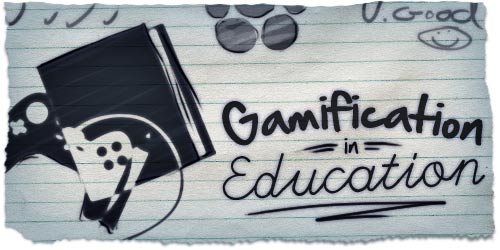In our Technology of the Week video, we are discussing information goods and their application in education. Information goods are defined as anything that can be digitalised. This does not necessarily mean they have been digitalised yet. However, many goods have undergone his transformation in the past decade. As an example, take the music industry. To begin with, we could only listen to live music. We found a way to digitalise music, by ‘saving’ it on a LP. Later on, people invented cassettes and CDs. From MP3 files nowadays people listen to music using streaming software such as Deezer and Spotify.
Education is a very broad phenomenon and includes everything in the process to facilitate learning. In order to educate, a lot of information goods are used. Indeed, the key materials used for education include books, CDs and videos. At the same time, we see a trend where kids spend more and more time playing video games: on tablets, computers and consoles. Why is it that youngsters love to play games, but never really want to study? This made education experts think long and hard, and caused them to come up with a solution. Why not use this passion for games in education? Teachers, children, students but also employees use more and more devices to gain knowledge and train. They add game elements to the learning process. This process is called gamification.
Gamification is basically the use of game elements in non-game contexts to engage users or solve problems. So what are game elements? If you break down a game into its basic components, whether it be a board game like monopoly, or an online role playing game like World of Warcraft, it consists of roughly the same ingredients. The first one is progression. Users need to see themselves progressing and succeeding along the way, with points and rewards on offer for getting further along in the game. Secondly, the time investment must be recognised, through achievements, collaboration with others, and encouraging virality to bring in new users. The third and final ingredient involves the ability to continually unlock information. This can be achieved through the use of bonuses, countdowns, loss aversion tactics or infinite play.
When it comes to education, companies such as DuoLingo and Kahoot capitalised upon these elements and used new technologies to create a fun way to learn. DuoLingo is an app that enables users to learn a language for free, whilst having fun. The different levels, the points system, and the indication of time spent are game elements. They enable the user to learn a language; the perfect example of gamification.
Some companies even took the gamification of education one step further. Take Snappet and Dreambox Learning. They combine multiple existing programmes, such as the aforementioned Duolingo and Kahoot, to offer software that creates a digital learning environment. These software products are being used more frequently in schools. They give real-time feedback to students and enable teachers to spend more time on students who need more attention. Users get rewarded for good answers instead constructive feedback where improvements can be made.
Gamification of education has not only been implemented in schools. Companies such as McDonald’s and Deloitte saw the big opportunities and have used gamification in their employee training programmes. For example, McDonald’s created a game to educate their employees about a new till system, by integrating game elements into a real life training program.
The question remains, what will education look like in the future with this increased use of gamification? It has already gone through major changes in recent years, and in the future might we all be participating in one big role playing game in class, or will there even be physical schools at all? One thing is sure, the internet and gamification of education has already altered education and in the future we will see even greater changes.
Link to video: https://www.youtube.com/watch?v=GNBXiLYG1Uc
Group 44
Suzanne Louis – 369054
Nick Filby – 366641
Luc Faëlens – 369624
Olympe Lefèvre – 374320

